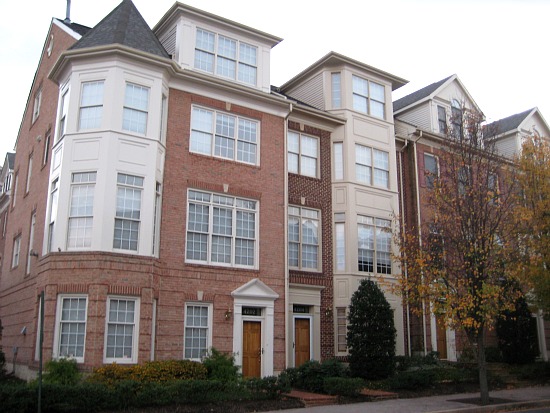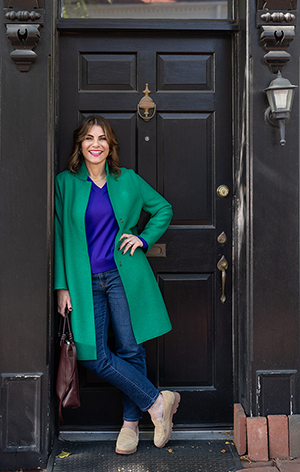What's Hot: Why Tysons Needs 10,000 More Apartments
 Ballston: Looking to Give People A Reason to Stay Past 6pm
Ballston: Looking to Give People A Reason to Stay Past 6pm
✉️ Want to forward this article? Click here.
Ballston, the Arlington County neighborhood on Metro’s Orange Line, is a very walkable, pleasant neighborhood in northern Virginia that seems to be searching for its sense of place. While the streets are lined with shops and full of people during the day, most of the stores and restaurants are chains and there’s very little to set the community apart. As a result, there isn’t much reason to visit Ballston unless you work or live there. But the neighborhood’s business owners are well aware of the issue—and of the growing popularity of Clarendon, just a mile to the east—and have hatched a plan that they hope will transform the area.
One End of the R-B Corridor
Ballston, which is bounded by Washington Boulevard to the north, North Glebe Road to the west, and North Quincy Street to the east, is home to North Glebe Road and Wilson Boulevard, the oldest crossroads in Northern Virginia. The irony is that you'd never know it to see the neighborhood now, as it is just about as built up as it possibly could be.
In part, that’s the result of an Arlington County zoning plan that prioritizes density around Metro stations. Like a number of other stops along the Orange Line’s Rosslyn-Ballston (R-B) corridor, the area has numerous high-rise condo, apartment, and office buildings immediately near the Metro that eventually give way to townhouses and then detached single-family homes as you move farther out. Ballston’s high-rises tower over relatively narrow streets, which isn’t necessary a bad thing—Washington has so few tall buildings that they’re almost a novelty—but it also doesn’t help warm up the neighborhood.
Not Just Young Professionals
“Around 60 percent of Ballston residents are 45 [years old] or younger,” James Schroll, president of the Ballston-Virginia Square Civic Association, told UrbanTurf. “And the high-rises are filled with mostly 20-somethings.”

Townhouses in Ballston
It is not surprising that the condos, apartments, and even the townhouses a block or two away from the Metro appeal to a youngish demographic that might rather buy or rent in Clarendon, but can’t quite swing the higher cost. But Schroll and his vice president (and roommate) Conor Marshall are quick to point out that the neighborhood is full of a variety of residents, not just 25-year-olds working on the Hill (Schroll) or for a high-profile association (Marshall). “In our townhouse complex alone, there are young families and also retired individuals whose families are grown,” said Marshall.

The roof deck at Liberty Center
Cheaper, Yes, But Not Cheap
From 1960s and 1970s-era townhouses to luxury buildings like Liberty Center that were erected in the last few years, the housing options in Ballston run the gamut. A few of the blocks at the northern end of the neighborhood even feature cute detached bungalows and Cape Cod houses. But though the housing stock may be more affordable than what’s available in neighborhoods closer to the District, you can’t call them cheap. According to Mike Rosen, a real estate agent with the Provident Team, one-bedroom condos sell for an average of $317,000 and two-bedroom units go for $507,000. Two-bedroom townhouses, meanwhile, sell for around $596,000, while three-bedrooms cost roughly $672,000. Single family homes are slightly less expensive, averaging $667,000. The area has a number of rental units. One-bedroom apartments range from $1,200 to $2,200 a month; two-bedroom units rent for between $1,800 and $2,900.
Transportation is Key
“The ease of getting around is a huge factor,” Ryan Andrews, 39, said of why he decided to move to Ballston. Andrews has a car, but he’s barely driven it at all in the two months since he moved to the area. Because it covers a small area, it is hard to be much more than a five-minute walk from the Metro station in Ballston. The area is also close to I-66 and Route 50, both of which lead into DC. The neighborhood is also well served by a variety of Arlington Transit (ART) buses, but the neighborhood transit hub—with its lack of good lighting and broad expanse of empty plaza space—has been the subject of residents’ complaints. The county has listened, and is currently conducting a study to reconfigure the space and improve its appearance and operation.
A Reason to Stay After 6pm
In order to improve a stagnant commercial district, the area’s business owners have banded together and are lobbying the county for approval to form a business improvement district (BID). If approved, the entity would be in charge of branding and marketing the neighborhood—in essence, giving people a reason to stay in Ballston after 6pm. Currently, many of the area’s businesses are lamentably easy to overlook. Ballston Commons, the neighborhood mall, is much maligned for its lack of shopping options, despite having a Macy’s and a movie theater. Still, its facades are uninspired and outdated and don’t contribute much to the surrounding streets.

Sweetgreen opening in Ballston. Courtesy of Sweetgreen.
Elsewhere, the neighborhood is chock full of chains, many of which you can find anywhere like Starbucks, Panera, Chipotle, and Cosi. But the silver lining is that the area has very recently become home to a number of intriguing local chains, like Rustico and Buzz Bakery, both from Alexandria, and DC’s Sweetgreen and Vapiano. There are also a few interesting independent restaurants—not a lot, but the number seems to be growing. Willow, an innovative Continental restaurant, is located in the heart of Ballston; Brgr:Shack, another in a line of new burger restaurants to hit the region, is opening soon; and Pizza Autentica opened a few months ago.
The Bottom Line
Ballston hasn’t done a great job in the past of marketing itself, but those who want to improve the area’s reputation will find they’ve got a lot to work with: a great location, a ton of young professionals with disposable income, a pedestrian-friendly area, and a slowly-but-surely growing restaurant scene. Amanda Abrams is a Washington, DC-based journalist who has written feature stories for The Washington Post, Christian Science Monitor, and Washington City Paper.
More Info on Ballston
- Zip code: 22203
- Ballston-Virginia Square Civic Association
- Schools: Ashlawn Elementary, Swanson Middle School, and Washington-Lee High School
- Ballston real estate data and profile from Redfin
- Ballston rental listings from Craigslist
This article originally published at https://dc.urbanturf.com/articles/blog/ballston_looking_to_give_people_a_reason_to_stay_past_6pm/2749.
Most Popular... This Week • Last 30 Days • Ever

For the second year in a row, the 20008 zip code, home to portions of the Forest Hil... read »

One of the critical factors in determining whether refinancing is a wise decision is ... read »

Located in Upperville, the 571-acre property known as Ayrshire Farm is under contract... read »

Tysons Corner will need a lot of new housing over the next 15 years, according to a n... read »

Gallaudet and JBG SMITH have filed a two-year extension of an approved planned-unit d... read »
DC Real Estate Guides
Short guides to navigating the DC-area real estate market
We've collected all our helpful guides for buying, selling and renting in and around Washington, DC in one place. Start browsing below!
First-Timer Primers
Intro guides for first-time home buyers
Unique Spaces
Awesome and unusual real estate from across the DC Metro















